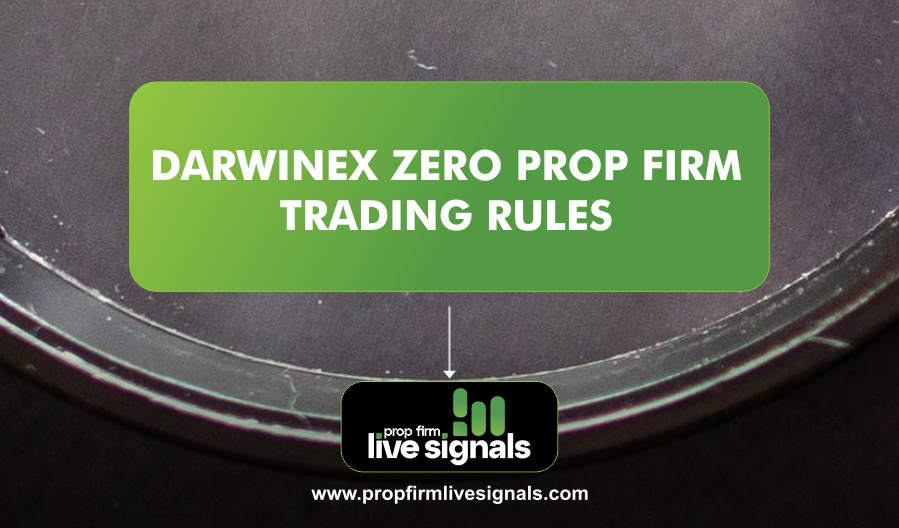What is a Funded Futures Prop Firm?
A funded futures prop firm is a company that provides capital to traders to trade futures contracts on various markets. Instead of using their own funds, traders get to manage the firm’s capital and share the profits from their trades. Prop firms typically provide a set of rules and guidelines that traders must follow in exchange for the opportunity to trade with the firm’s funds.
The fundamental benefit for traders is the ability to trade without the need for personal financial risk. The prop firm bears the risk of any losses, though traders often face limitations, such as profit-sharing models and account allocations.
What is Max Account Allocation?
Max Account Allocation refers to the maximum amount of capital a trader can control in a funded futures trading account with a prop firm. This is a key metric in the trading world because it directly impacts the trader’s potential to make profits and manage risk.
When a trader receives capital from the firm, they can trade within the firm’s guidelines. Max Account Allocation determines how much capital they can access, based on skill, experience, and performance.
Why Max Account Allocation is Important
Max Account Allocation plays a significant role in a trader’s success. Understanding this figure is crucial because:
- Risk Management: The larger the allocation, the higher the potential risk. Traders need to ensure they are ready for the responsibility of managing larger sums.
- Profit Potential: With a larger allocation, the trader can make bigger profits, but the risk of larger losses also increases. It’s a balance between reward and risk.
- Firm’s Trust: The amount of allocation you’re given is often tied to your performance and experience with the prop firm. A larger allocation typically means the firm trusts your abilities more.
- Growth Opportunity: As traders improve and demonstrate their ability to manage larger funds effectively, they may be granted higher allocations, opening up more lucrative opportunities.
How Max Account Allocation Works in Prop Firms
Each prop firm has its criteria for granting the Max Account Allocation. These criteria often include the trader’s:
- Experience Level: Newer traders may start with smaller allocations to minimize risk for the firm, while experienced traders may be offered higher allocations.
- Profitability: A trader’s historical performance plays a significant role. Those with a consistent track record of profitable trades are more likely to receive larger account allocations.
- Risk Management: Prop firms evaluate how well a trader manages risk. If a trader shows the ability to make disciplined decisions without exposing the firm’s capital to unnecessary risks, the allocation may increase.
- Adherence to Rules: Most prop firms require traders to adhere to certain risk management rules, such as daily loss limits, maximum drawdowns, and minimum profit targets. If traders can meet these requirements consistently, they may see their max allocation increase.
Types of Account Allocations in Prop Firms
Different prop firms have varying methods for account allocation, but the most common types include:
- Initial Allocation: The starting capital given to traders when they begin working with the firm. It’s usually based on the trader’s initial assessment or a funded trading challenge.
- Incremental Allocation: Some prop firms provide incremental increases in allocation as traders demonstrate consistent profitability. For example, after a certain number of successful trades or a sustained period of profitability, traders may receive a higher allocation.
- Performance-Based Allocation: This type of allocation ties directly to a trader’s performance. The more profits a trader generates, the larger the allocation they may receive.
- Maximum Allocation Limit: Every prop firm has a cap on how much capital they can allocate to a trader, known as the maximum allocation. This cap varies from firm to firm and depends on various factors, including the firm’s size and the trader’s risk profile.
Factors Affecting Max Account Allocation
Several factors influence the Max Account Allocation in a funded futures prop firm:
- Trader’s Risk Profile: The prop firm evaluates how much risk you are comfortable with and how well you can handle large amounts of capital. If you’re prone to risky trades or show volatility in performance, your allocation might be capped.
- Market Conditions: Prop firms take into account the overall market conditions. For example, during periods of high volatility, they might lower allocations to ensure their capital is not exposed to significant risks.
- Firm Policies: Each firm has different policies regarding Max Account Allocation. Some might offer very large accounts to experienced traders, while others might cap allocations at a lower level to maintain tighter risk controls.
- Trader’s Trading Style: Traders who engage in high-frequency trading (HFT) might be granted smaller allocations due to the inherent risks, while those who employ longer-term strategies may receive larger allocations as their trades are less prone to short-term market swings.
Max Account Allocation and Risk Management
Understanding Max Account Allocation is crucial when it comes to risk management. With a larger allocation, the potential for significant losses also increases. Here’s how you can manage that risk:
- Risk-Reward Ratio: Every trade should have a favorable risk-reward ratio. For instance, you should aim to risk 1% of your account per trade, with the potential to earn 2% or more in return.
- Diversification: Spread your trades across different assets or contracts to avoid putting all your capital into one trade or market.
- Stop-Loss Orders: These orders are essential in limiting losses. By setting stop-loss orders for each trade, you can ensure that you don’t lose more than your predetermined risk amount.
- Position Sizing: Don’t risk more than a certain percentage of your account on any given trade. By sizing positions correctly, you can minimize the impact of a losing trade on your overall allocation.
How to Qualify for Max Account Allocation
To qualify for the Max Account Allocation at a funded futures prop firm, you generally need to:
- Pass an Evaluation Process: Most prop firms require you to pass an evaluation or challenge. This process involves trading a demo account with specific profit targets and risk limits. If you meet these goals, you get funded and are given an initial account allocation.
- Show Consistent Performance: Once funded, you need to demonstrate consistent profitability. Firms will likely track your performance over time to determine whether you qualify for a higher allocation.
- Meet Risk Management Rules: Following strict risk management rules, such as adhering to drawdown limits and maintaining a certain profit factor, can increase your chances of getting a higher allocation.
- Maintain a Trading Journal: Keeping a trading journal can help you track your strategies, performance, and risk management techniques. It can also help the prop firm see your commitment to developing as a trader.
Conclusion
Max Account Allocation is crucial for traders in funded futures prop firms. With proper risk management, a solid strategy, and following firm guidelines, traders can increase their allocation and profit potential. However, larger allocations mean more responsibility, and balancing risk and reward is key to long-term success.
Frequently Asked Questions (FAQs)
How much capital can I expect as a Max Account Allocation?
The amount varies by firm. Some firms start you with as little as $10,000 and others may provide up to $1,000,000 depending on your performance and their policies.
What if I lose the capital allocated to me?
If you lose the entire allocated capital, you may lose your funded status with the prop firm. However, most firms will allow you to reset your account after meeting certain conditions.
Can I request a higher allocation?
Yes, most firms allow you to increase your allocation over time as long as you meet their performance criteria.
Is there a maximum limit to the allocation?
Yes, most firms have a cap on how much capital they will allocate to a single trader, though this limit varies by firm.
How do I increase my Max Account Allocation?
Consistently profitable trading, adhering to risk management rules, and meeting performance targets will help you increase your account allocation.
What happens if I break the firm’s rules?
Breaking the firm’s rules (like exceeding drawdown limits or failing to maintain proper risk management) can result in losing your funded account or a reduction in your allocated capital.




